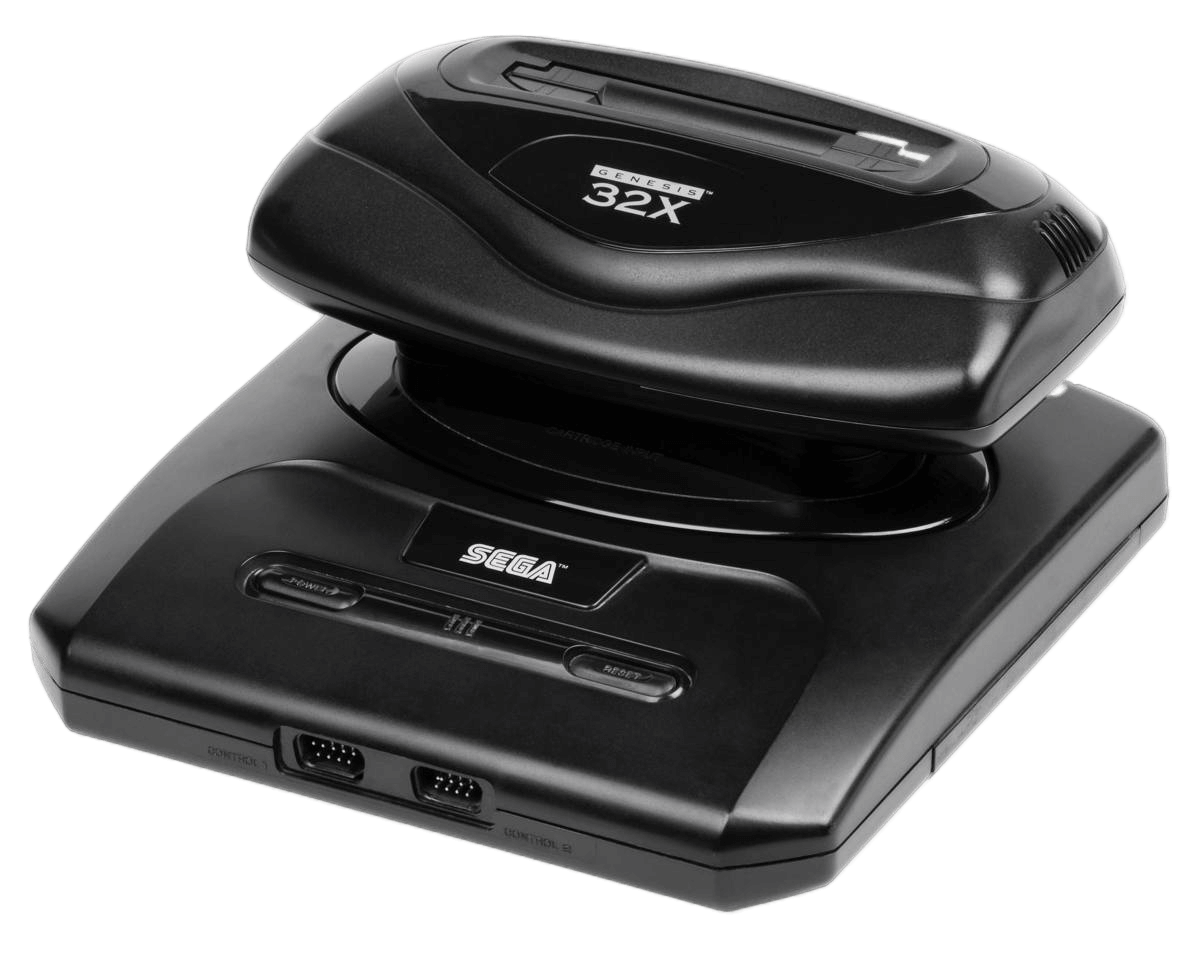
The Sega 32X, released in late 1994, was a short-lived add-on designed to boost the aging Sega Genesis with 32-bit power. Intended as a more affordable alternative to the upcoming Sega Saturn, the 32X plugged directly into the Genesis cartridge slot and provided dual 32-bit SH-2 processors, allowing for improved 3D graphics and arcade-style experiences. Sega hoped it would extend the life of the Genesis and offer a “next-gen” bridge for players not ready to jump to more expensive hardware. However, it entered the market at a time when players and developers were already looking ahead to the Saturn and Sony’s PlayStation.
Although technically capable, the 32X suffered from a lack of compelling software and poor timing. Only about 40 games were released for it, many of which were either ports (Doom, Virtua Racing Deluxe) or underwhelming experiments. Some titles required both the Sega CD and 32X, adding further complication and expense. Developers were reluctant to invest in a device with such an uncertain future, and consumers were confused by Sega’s increasingly fragmented hardware lineup. Within months of the 32X’s release, Sega began shifting its focus entirely to the Saturn, effectively abandoning the add-on.
With fewer than 1 million units sold worldwide, the 32X is widely considered one of Sega’s biggest missteps. It damaged consumer trust and contributed to the perception that Sega’s hardware strategy lacked direction. Yet, in retrospect, the 32X is an intriguing piece of gaming history—an ambitious but rushed attempt to keep pace in a rapidly evolving industry. Today, it lives on as a cult curiosity among collectors and a cautionary tale in platform management and marketing.
Sega 32X Technical Specifications
| Component | Specification |
|---|---|
| CPU | Dual Hitachi SH-2 32-bit RISC processors @ 23 MHz each |
| Co-Processor | Works in tandem with the Genesis’ Motorola 68000 |
| Graphics | 32,768-color palette, capable of rendering 50,000+ polygons/second |
| Resolution | Up to 320x224 (shared with Genesis base system) |
| Sound | Uses Genesis’ Yamaha YM2612 and Z80 sound chip (no separate 32X sound) |
| Media | 32X-specific ROM cartridges (not compatible with standard Genesis carts) |
| Release Date | 1994 (North America and Japan) |